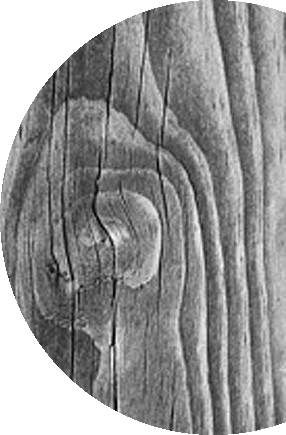 |
Touching |
|
Frances Noble talks to furniture maker John Barnard about his dreams and designs. | |
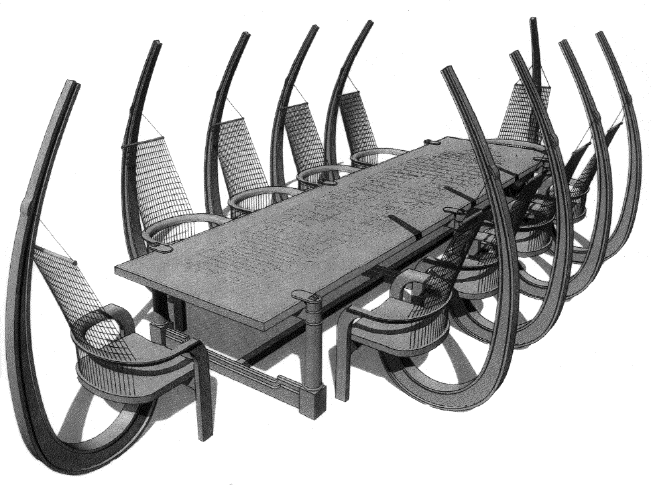
| |
|
Did you have any formal art or design training? | |
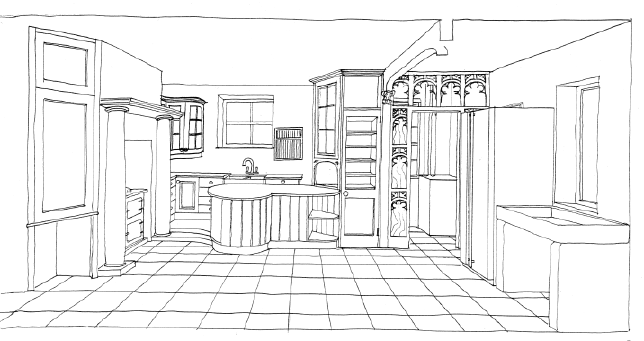
| |
|
So did you come from an artistic and design-conscious family? My father was City Treasurer here in Norwich but my mother was an artist. My father had given up the priesthood (his family couldn’t have afforded that) and his next choice to be a lawyer was also beyond them, so he trained as an accountant. He would have made a brilliant barrister – a flamboyant and charismatic speaker, a real showman. But his own sacrifice influenced his attitude toward me and what he considered worthwhile work. I was fascinated by Meccano and electric motors and my papa thought I should be an engineer but I didn’t fancy university (that’s one of my biggest regrets now – not having experienced university life). What did you do then? There was a long period of unsatisfactory short-lived jobs as varied as, two years student apprenticeship with computer-makers, Elliott Automation, selling shirts in Selfridges and digging part of the Jubilee line. I enjoyed the Jubilee line though – maybe I should have been a civil engineer, I would certainly have made more money than I do in this business. Or perhaps I should have trained to be an architect. Unfortunately I didn’t get to grips with maths until it was too late. When I came back to Norwich I started as an apprentice at Laurence Scott and Electromotors. I wasn’t cut out for the life of a craft apprentice, in fact I got the sack from Laurence Scott because of the announcements I made over the tannoy. I seem to remember that it was my regular call of ‘Good morning campers!’ which was the final straw for the management – it made everyone else laugh though. I enrolled at City College to study electrical engineering, not a success; so I switched to mechanical engineering which seemed much more understandable at the time. Although when I turned up one of my old notebooks the other day it was totally unintelligible. I stuck it for six years, and the main benefit has been that I am determined that no apprentice of mine should ever, ever be as bored as I was then. How do you relate to and work with your own employees? They are an essential adjunct to me. Without them we wouldn’t function. It’s having a workshop, actually making things and understanding the skills, which gives me credibility over and above just being a designer. Whether it’s me or one of my staff making things shouldn’t and doesn’t matter – it’s the whole thing that matters, client’s brief, designer’s eye, cabinetmaker’s skill. How did the first piece of furniture happen? After Laurence Scott I left Norfolk and moved down to Dorset to work for John de Savary – that’s where I made my first piece of furniture, and where I met my wife Jacquie. She was the boss’s secretary, and he didn’t like losing her so I had to move on yet again. We came back to Norwich and another miserable time working as Planning Manager at a plastic works on Salhouse Road. When I had to give notice to half the work force I decided that was the time to chuck it all in and start making furniture. We were married by then and with £168 redundancy money and a garage behind our house in St Stephen’s Square as a workshop, Jacquie and I started this business. We took an ad in House and Garden: ‘Polished pine shelf-units made and delivered anywhere in the UK.’ Every time I got an order I went to Cushions, bought the timber, made the thing and posted it off – we stored spare timber under the bed. That began in August 1971, but the repetition got to me, I can’t cope with repetition – I find it difficult to handle. We really went to town on those shelf-units – we had the cardboard boxes for packing and posting them specially designed. But we only ever placed the one ad and eventually it all dried up. By then though friends had started asking me to make things, kitchen units mostly, and my family rallied round and ordered things – so we got by, just. | |
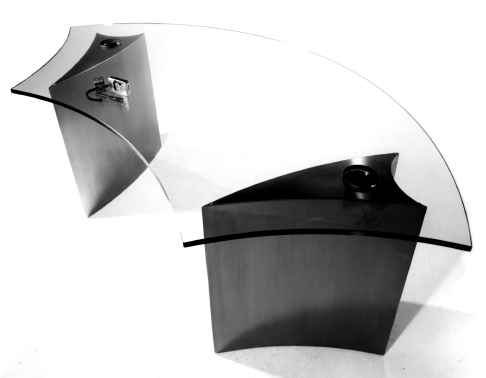
| |
|
Who influenced your style at that time? It has to have been Terence Conran, the only furniture designer who got rich. He had the sense to stick to batch production, and to avoid the custom-made thing. All the rest of us made one off pieces. The bookshelves (see opposite) were based on his ideas. Once you’ve got your eye in you begin to notice other things around you and start wanting to make different things in different ways. What is it that you enjoy about making furniture? It’s solving the problems which gives me pleasure. I say to people who ask advice – make one thing and sell it – forget about custom-made furniture. Don’t follow my own advice though! What is it like working to commission? It can be awful but is usually fascinating. I’m like a rabbit transfixed by the glare of the problems which have to be resolved. For a start you have to learn how to interpret what the customer says and what they mean when they tell you what they want. I remember once a client asking for a wall of shelving in ‘Mondrian Style.’ I figured I had better check Mondrian’s style out a bit, so I started looking at books about his work. Then of course I had to work out which bits of his style they meant. You don’t just use wood in your furniture – what other materials appeal to you and why do you mix them? It’s partly a question of resolving problems again, coping with the characteristics of different materials is a challenge. But it’s the junctions between the different materials which gives an aesthetic pleasure which will stay with me until I die. I use stone, metal and acrylic regularly and think of their boundaries as like a bay, cliffs coming down to a sandy shore, acrylic seeping into a flaw in a plank, bronze caps holding down an oak table top. Contrast, form and technical challenge are the things that please me. | |
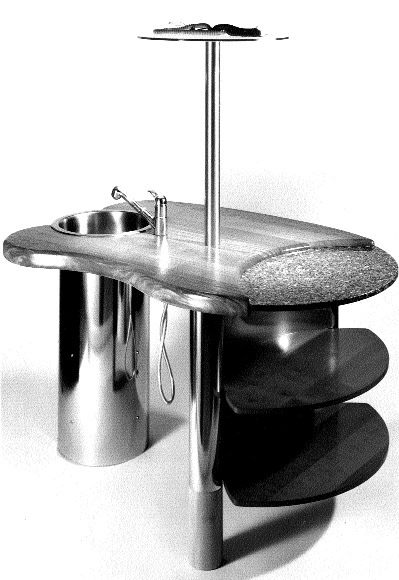
| |
Tell me about your latest project, how did it come about? The Victory project is really exciting. It started with one of my clients, James Boddy, a member of the consortium which bought the materials from the Victory’s latest refit. Did you know that there is a refit of HMS Victory, Nelson’s flagship at the Battle of Trafalgar, every 50 years? That means there is 25 tons of wonderful old oak and ten tons of copper from the ship available for re-use. I was asked to design a table and a set of chairs which combine Victory oak with more modern oak. There was a three month purely conceptual phase. I went to present my ideas to the people who commissioned the project with well-worked drawings of what I thought we could do, but in the final moments before the presentation I started to draw again and the design they chose is the one I had scribbled on the back of some spare paper I had in my bag. That’s the way it goes. You can see how these drawings echo the sense of the ship’s carcass (see previous page), and rigging; the table legs are gun-barrel stems and the chair backs are made of hemp rope – like rigging on the ship. It has been a wonderful, but expensive design project and now we have to sell some of the furniture to recover some of the cost. It will give you some idea of the scale of things when I say that it has probably cost about £22,000 to produce the first chair! Now I have orders for eight, nowhere near enough to recover my investment – but it is a start. Designing bespoke furniture is a risky process – it’s no good having the original ideas if no one wants to pay the price to buy them! What sort of relationships do you have with clients? I find it very difficult to design for people whom I can’t call by their first name. If I can’t it’s most unlikely they will allow me into their mind and thought processes, which is essential if I am to resolve the design problems and come up with a satisfactory solution. A customer who gives generously produces the most inspired results, the others get a more constrained solution. I’ve got one client with multiple sclerosis, and when he finally decided to order a kitchen from me we had great fun designing it. We’ve been having great fun spending his money ever since, though his wife regards me with deep suspicion every time I appear. Do you always work to commission, or do you sometimes design and make things just for the sake of it? It’s almost always for commission, free design is an indulgence and very rare. Having said that some the things I am most proud of have been free design, the wedding present I made for the Prince and Princess of Wales was, and the Victory project has been almost free design. My next ‘free design’ idea is inspired by the excitement of motor vehicles – trying to build that excitement into furniture design – but it almost never reaches that level because of the limitations of the design briefs. Cars carry conviction, not only their materials, their curves and convolutions but their functions, speed, noise, colour and gloss all contribute to the success of the whole machine. I am interested in using colour in some of my new designs. Tell me about your workshop. It was a derelict pumping station when I arrived – one of three sewage-pumping stations by the river in Trowse. Two had been derelict for years and it seems nearly as long again that I have been trying to put the wheels in motion to turn the whole site into a creative centre. I have this vision, this idea of bringing together creativity, commerce and capital – all working together, moving in the same direction and thriving on a cross-fertilization of ideas. I want to mix all sorts of disciplines, dividing the buildings into different sized studios, offices and workshops for designers, craftsmen and women, computer buffs, jewellers, engineers and architects – creative people generally. There will be communal facilities, meeting rooms, coffee shops, gardens and eventually a facility for clients and colleagues to stay overnight on the site. People who have ideas often don’t have the skills or experiences which enable them to judge what is marketable and what is not. On a site like this they could have access to people who could advise them how they can achieve financial as well as creative reward from their work. Do you think business skills should be taught as part of art and design training? It’s never too early to be trammelled by commerciality or at least to find out what it’s all about. I once had to give an hour and a half’s chat to third year students graduating from the furniture-making course at High Wycombe. Answering their questions I was amazed to find that no one had taught them that sort of thing in the whole of their three-year course! How to understand customers, how to draw up a contract, how to value and cost a job. It may be unfashionable to say this but I would never advise a student to start a business, except for the very few knowledgeable and hard-nosed natural entrepreneurs. For the rest it’s a recipe for despair and disaster. John Makepeace, one of this country’s most respected furniture makers’ trains his students in as many commercial aspects of the business as he can. Even so a third of those who go into business on their own are kaput within three years. Your son is a furniture maker and designer, did you advise him against it? Oh, certainly. I tried to persuade him to train as an architect. Despite graduating with distinction, and one of his designs winning a national award he has found it impossible to find a job as a furniture designer. I’ve finally persuaded him to come into my own workshop but it’s not all plain sailing. His course may have included business skills and costings, but only experience can teach you how to deal with customers. He nearly lost us a valuable order the other day by asking for a standard deposit from an old customer. Being business-like can get in the way of a good relationship. Do you think we have proper respect for creativity? In Japan creative people are held in the same regard as doctors and other professionals. You will see pictures of the craftsmen next to the things they have made in trade catalogues. The Japanese believe that the spirit of the maker enters into the work. In fact, come to think of it any nation that can invent Feng-shui has to be spirit sensitive. The English have never been very good at spirits. I lost a £250,000 project because of Feng-shui. I designed a kitchen and then the Feng-shui expert came and said that it should be somewhere else in the house. He had no ergonomic training or particular kitchen experience, but he threatened seven year’s bad luck if my original plans went ahead – so I lost the job. For once, though, I had asked for a fee for the design so, as my wife points out, I probably made more money than if the project had gone ahead. | |
|
What do you think of Feng-shui then? I’ve got several books on the subject and I agree with a lot of what they say about the powerful psychological effects of soothing design, restful but functional. But spirituality isn’t all there is to good design! Do you have any exciting new projects in mind? A while ago I went to Rumania with some friends as part of the Save the Orphans programme. We collected a band of doctors, nurses, and workmen, slept under the van we were travelling in, got robbed by the local gypsies who took my passport and trousers while I slept, but left my boots – perhaps they were too big for themor perhaps it was a courtesy to leave the victim’s boots. We set ourselves to rebuild the orphanage (which was in a terrible state) in a week. Digging out the sewers, trying to install an electrically-pumped water system. We almost finished it and at the end of our week a Swiss team took over. It was both a terrible and a wonderful experience, these were the abandoned children, the unloved and unwanted. When we arrived they were getting water for three hours a day from a tap in the garden – if they were lucky. We saw children licking up water from the filthy floors, drinking their own urine. Now I have been asked to start a workshop in India for village children. I would help design and set up a workshop where children could work for a proper wage rather than being exploited by agricultural overseers for labouring in the fields. I’m attracted to an idea which will teach the elements of furniture making using indigenous materials and methods to satisfy local demand and which will give these children a sense of their value in our world. |
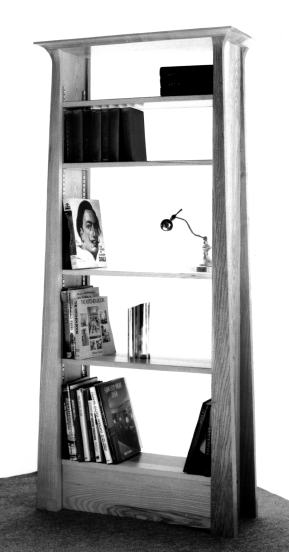
|
|
I may never get rich in this job but I do have the opportunity to use my skills in a worthwhile way. | |
| Home Page | See more of John Barnard's work |